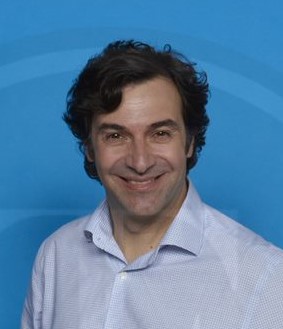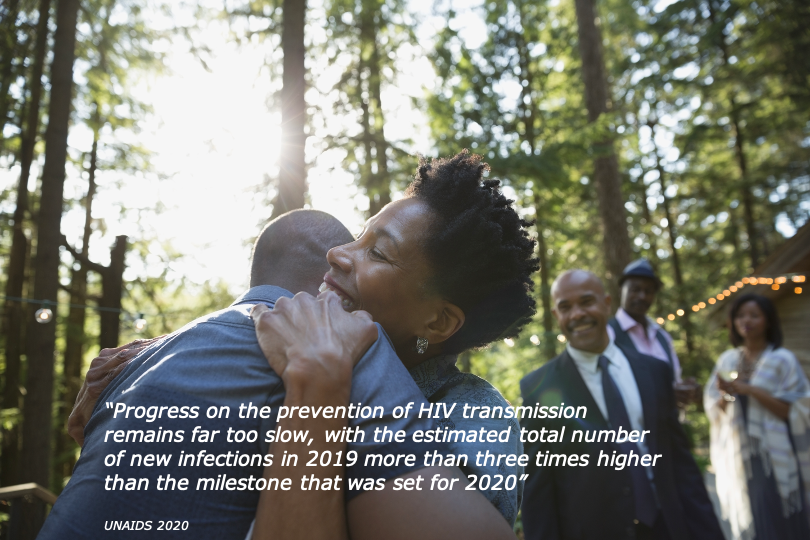Zero HIV stigma by 2030? The clock is ticking
Zero HIV stigma by 2030? The clock is ticking

Author: Jaime Oliver Vigueras, MD Janssen Therapeutic Area Lead, Immunology, Europe, Middle East & Africa
Stigma and discrimination have been around since the earliest days of HIV. Can we eliminate them in a decade?
Three zeros
In 2010, the UN General Assembly set out a three-goal vision: zero new HIV infections, zero AIDS-related deaths and zero HIV-related stigma and discrimination by 2030.1 The introduction of pre-exposure prophylaxis (PrEP) and the launch of the Global HIV Prevention Coalition in 2017 have both played a role in reducing HIV infections. Despite all of this progress, gaps remain, and a lack of sufficient progress means we are not currently on track to achieve three zeros by 2030.1
Stigma harms
While UNAIDS goals for HIV infections and AIDS-related deaths have been refined and shifted since 2010, the goal to eliminate discrimination remains constant. This is based on the human rights principle that ‘a single case of discrimination is one too many’.1,2
But, why is eradicating stigma such an important goal for tackling HIV? Despite significant advances in HIV treatment and prevention, stigma is a barrier that discourages and even prevents at-risk individuals from seeking the support they need.1
Certain populations remain vulnerable to the damaging effects of stigma, discrimination and punitive laws, including: men who have sex with men, people who use and/or inject drugs, sex workers, transgender people, and people in prisons and other closed settings.3 A recent review of the UNAIDS strategy revealed that in 34 of 36 reporting countries, over 25 percent of people aged 15–49 reported discriminatory attitudes.4
While some countries have rolled back punitive and discriminatory policies and laws, 60 percent still have barriers in place which stop key populations and vulnerable groups from accessing HIV services.5,6 Certain countries have introduced ‘anti-propaganda’ laws relating to LGBTI communities, and stronger penalties for HIV exposure and transmission.6
Such stigma and criminalisation is linked to delayed HIV testing, greater risk of infection, concealment of positive serostatus and a lower uptake of services.3,4
Dismantling discrimination
It’s right to insist that with HIV ‘nothing other than zero discrimination is acceptable’.2 But how do we achieve this?
Health services, delivered by appropriately trained staff, ‘should be made available, accessible and acceptable to key populations, based on the principles of medical ethics, avoidance of stigma, non-discrimination and the right to health.’ This includes removing age-related barriers to HIV services for adolescents, allowing them independent access to sexual and reproductive health services.3
Another critical factor is eliminating tolerance of rape and other sexual violence within prisons and other closed settings, such as intra-familiar rape and other sexual violence. The provision of education, work and leisure programmes for prisoners, adequate staffing and effective surveillance is key.3
Finally, monitoring and preventing violence against key populations, in partnership with key population-led organisations, should be a priority. A notable success story is the community-led Durbar Mahila Samanvya Committee who run STD/HIV intervention programmes in 49 sex work sites in West Bengal. This includes providing testing, counselling and care for people with HIV/AIDS7 and has helped to reduce HIV infections among sex workers.5
Moving the needle
Ending an entrenched public health threat requires determination and a coordinated global effort by governments in partnership with civil society, the private sector, key populations and people living with HIV.3 It will also generate significant economic benefits.2
If, however, we do not move the needle to zero, the financial and humanitarian cost will be huge.2 We have 10 years.
I am extremely proud to be part of Janssen and to be contributing to achieving the ‘zero HIV’ vision. We will continue to leverage our knowledge, science and expertise and partner with others to support people living with HIV and to help prevent future infections.

References
1. UNAIDS. Seizing the moment: Tackling entrenched inequalities to end epidemics. 06 July 2020. Available at: https://www.unaids.org/sites/default/files/media_asset/2020_global-aids-report_en.pdf (Accessed October 2020).
2. UNAIDS. Fast-Track – ending the AIDS epidemic by 2030. 18 November 2014. Available at: https://www.unaids.org/en/resources/documents/2014/JC2686_WAD2014report (Accessed October 2020).
3. WHO. Consolidated guidelines on HIV prevention, diagnosis, treatment and care for key populations. 2016 update. Available at: https://www.who.int/hiv/pub/guidelines/keypopulations-2016/en/ (Accessed October 2020).
4. UNAIDS. Evidence review: implementation of the 2016–2021 UNAIDS strategy on the fast-track to end AIDS. 31 July 2020. Available at: https://www.unaids.org/sites/default/files/media_asset/20151027_UNAIDS_PCB37_15_18_EN_rev1.pdf (Accessed October 2020).
5. UNAIDS. UNAIDS guidance for partnerships with civil society, including people living with HIV and key populations. 2011. Available at: https://unaids-test.unaids.org/sites/default/files/unaids/contentassets/documents/unaidspublication/2012/JC2236_guidance_partnership_civilsociety_en.pdf (Accessed October 2020).
6. UNAIDS. Global Report: UNAIDS report on the global AIDS epidemic 2013. Available at: https://www.unaids.org/en/resources/documents/2013/20130923_UNAIDS_Global_Report_2013 (Accessed October 2020).
7. Global Alliance Against Traffic in Women. Durbar Mahila Samanwaya Committee. Available at: https://gaatw.org/members/asia/127-membership/asia/553-durbar-mahila-samanwaua-committee-dmsc#:~:text=Durbar%20Mahila%20Samanwaya%20Committee%20is,based%20in%20West%20Bengal%2C%20India.&text=In%201999%2C%20Durbar%20took%20over,work%20sites%20in%20West%20Bengal. (Accessed October 2020).


